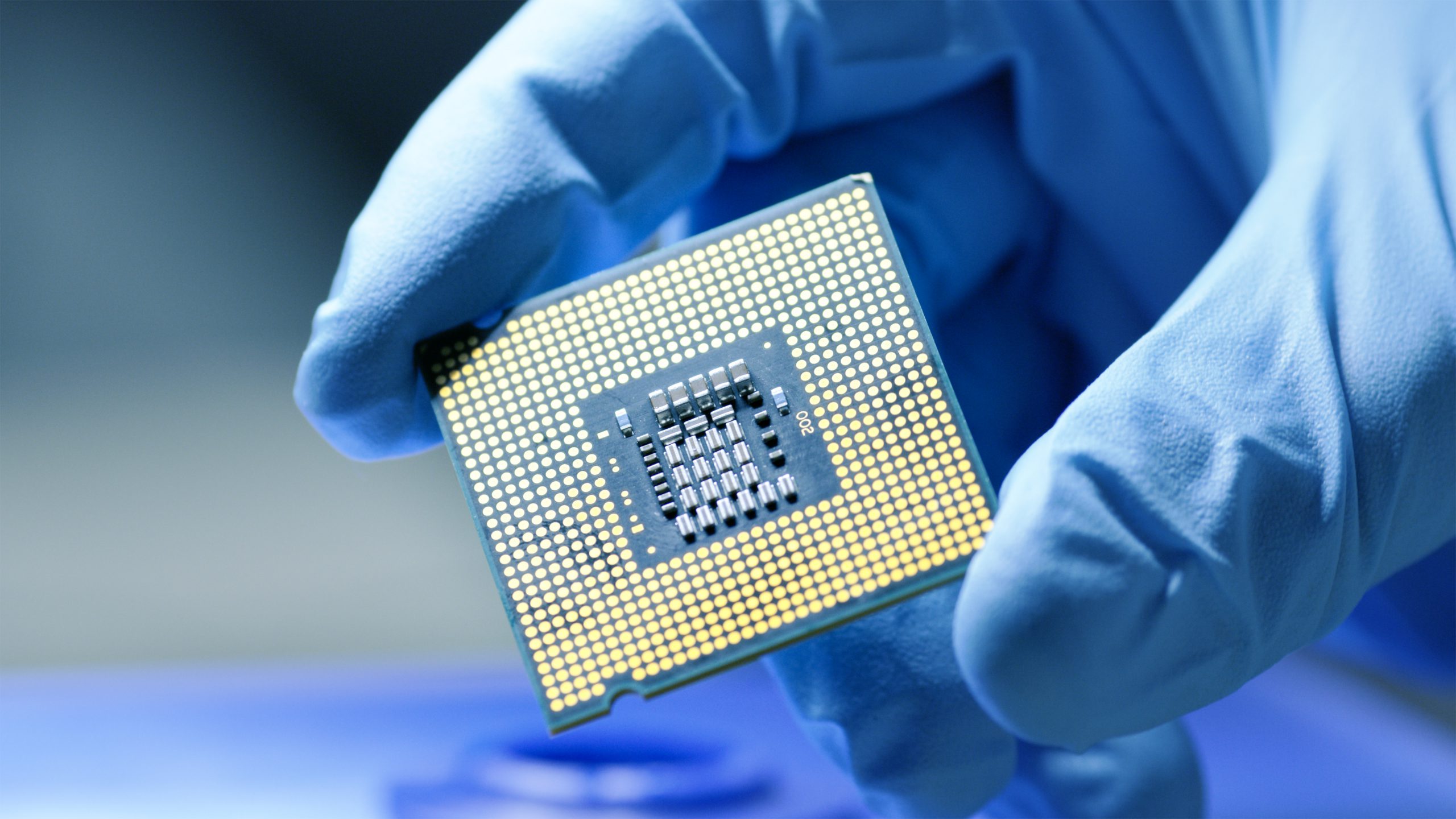
Even though prolonged chip supply shortage and tech sell-offs due to aggressive interest rate hikes have been significantly affecting the performances of semiconductor stocks this year, the growing demand for advanced and efficient chips and rising sales should help the industry to stay afloat.
Also, favorable policy support and increasing corporate investments to ramp up production should drive the industry’s growth. Therefore, prominent semiconductor stocks STMicroelectronics N.V. (STM) and Micron Technology, Inc. (MU) should benefit.
Based in Geneva, Switzerland, STM manufactures and markets semiconductor integrated circuits and discrete devices worldwide. It sells its products through distributors, retailers, and sales representatives serving telecommunications, consumer electronics, automotive, computer, and industrial sectors.
On the other hand, MU designs, manufactures, and sells memory and storage products through its computer and networking, mobile, storage, and embedded business units. It sells DRAMs, SRAMs, flash memory, semiconductor components, and memory modules to various end markets.
Investors’ interest in this space is evident from the Invesco Dynamic Semiconductors ETF’s (PSI) 3.6% gains over the past week versus the SPDR S&P 500 Trust ETF’s (SPY) 1% loss. The global semiconductor market is expected to grow at a 9.2% CAGR to $893.10 billion by 2029.
While MU gained 4% over the past week, STM surged 4.7%. But which of the stocks is a better buy now? Let’s find out.
Latest Developments
On July 11, 2022, STM and GlobalFoundries Inc. (GFS), a multinational semiconductor contract manufacturing and design company, signed an MoU to jointly operate a new 300mm semiconductor manufacturing facility in France, to ramp at full capacity by 2026, with up to 620,000 300mm wafer per year production.
It will support several technologies and include GFS’ market-leading FDX technology and STM’s comprehensive technology roadmap down to 18nm, which are expected to remain in high demand for Automotive, IoT, and Mobile applications for the next few decades. Also, this will expand its presence across Europe.
On July 6, 2022, MU announced the availability of Micron DDR5 server DRAM in support of industry qualification of next-generation Intel and AMD DDR5 server and workstation platforms. This provides up to an 85% increase in system performance over DDR4 DRAM5 and maximizes performance for AI, HPC, and data-intensive applications that require more CPU compute capacity and higher memory bandwidth.
Recent Financial Results
For the fiscal 2022 first quarter ended April 2, 2022, STM’s net revenues increased 17.6% year-over-year to $3.55 billion. The company’s gross profit came in at $1.66 billion, up 40.9% from the prior-year period. Its operating income was $877 million for the quarter, representing a 99.3% increase from the prior-year period.
While its net income increased 104.4% year-over-year to $746 million, its EPS grew 102.6% to $0.79. As of April 2, 2022, the company had $2.83 billion in cash and cash equivalents.
For its fiscal 2022 third quarter ended June 2, 2022, MU’s revenue increased 16.4% year-over-year to $8.64 billion. The company’s non-GAAP gross profit came in at $4.10 billion, indicating a 28.6% year-over-year improvement. Its non-GAAP operating income came in at $3.14 billion for the quarter, up 33% from the year-ago period.
MU’s non-GAAP net income came in at $2.94 billion, representing a 35.3% rise from the prior-year period. Its EPS came in at $2.59, up 37.8% from the year-ago period. As of June 2, 2022, the company had $9.16 billion in cash and equivalents.
Past and Expected Financial Performance
Over the past three years, STM’s EBITDA, tangible book value, and total assets have increased at CAGRs of 21.9%, 14.3%, and 12.5%, respectively.
Analysts expect STM’s EPS to grow 53.6% in fiscal 2022, ending December 31, 2022, and 3.3% in fiscal 2023. The company’s revenue is expected to grow 17.7% year-over-year in fiscal 2022 and 4.5% in fiscal 2023. Its EPS is expected to grow at 5% per annum over the next five years.
Over the past three years, MU’s EBITDA, tangible book value, and total assets have grown at CAGRs of 3.2%, 12.2%, and 12.2%, respectively.
MU’s EPS is expected to increase 40.9% year-over-year in fiscal 2022, ending August 31, 2022, and fall 25.2% in fiscal 2023. The company’s revenue is expected to grow 13.2% year-over-year in fiscal 2022 and decline 7.2% in fiscal 2023. Its EPS is expected to grow at a 10.5% rate per annum over the next five years.
Valuation
In terms of non-GAAP forward PEG, STM is currently trading at 0.79x, 27.4% higher than MU’s 0.62x. In terms of non-GAAP forward P/E, MU’s 7.20x compares with STM’s 9.84x.
Profitability
MU’s trailing-12-month revenue is 2.4 times that of STM’s. Also, MU is more profitable, with a 46.9% gross profit margin versus STM’s 43.6%.
Furthermore, MU’s net income margin and levered free cash flow margin of 30.6% and 9.9% compare with STM’s 17.9% and 3.4%, respectively.
POWR Ratings
While STM has an overall A grade, which translates to Strong Buy in our proprietary POWR Ratings system, MU has an overall B grade, equating to Buy. The POWR Ratings are calculated by considering 118 distinct factors, each weighted to an optimal degree.
Both STM and MU have been graded a B for Quality, consistent with their higher-than-industry profitability ratios. STM’s 26% trailing-12-month ROE is 263.6% higher than the 7.2% industry average. MU has a 21.7% trailing-12-month ROE, 202.8% higher than the 7.2% industry average.
STM has a B grade for Sentiment, which reflects its impressive earnings growth expectation. STM’s EPS is expected to grow 65% year-over-year to $0.85 for the fiscal 2022 third quarter ending September 30, 2022.
MU’s D grade for Sentiment is in sync with its lower earnings estimates for the fiscal 2023 first quarter ending November 30, 2022. Analysts expect MU’s EPS to be $1.33 for the first quarter, representing a 38.4% year-over-year decline.
Of the 95 stocks in the B-rated Semiconductor & Wireless Chip industry, STM is ranked #2, while MU is ranked #44.
Beyond what we have stated above, our POWR Ratings system has graded STM and MU for Stability, Growth, Value, and Momentum. Get all STM ratings here. Also, click here to see the additional POWR Ratings for MU.
The Winner
Despite the continued chip shortage, the efforts to ramp up production and development of efficient chips should benefit STM and MU. However, better earnings estimates make STM a better buy here.
Our research shows that the odds of success increase if one invests in stocks with an Overall POWR Rating of Buy or Strong Buy. Click here to access the top-rated stocks in the Semiconductor & Wireless Chip industry.
STM shares were trading at $32.57 per share on Monday afternoon, down $0.14 (-0.43%). Year-to-date, STM has declined -33.19%, versus a -18.70% rise in the benchmark S&P 500 index during the same period.
About the Author: Sweta Vijayan

Sweta is an investment analyst and journalist with a special interest in finding market inefficiencies. She’s passionate about educating investors, so that they may find success in the stock market.
Which Semiconductor Stock Is a Better Buy Amid a Global Shortage StockNews.com






